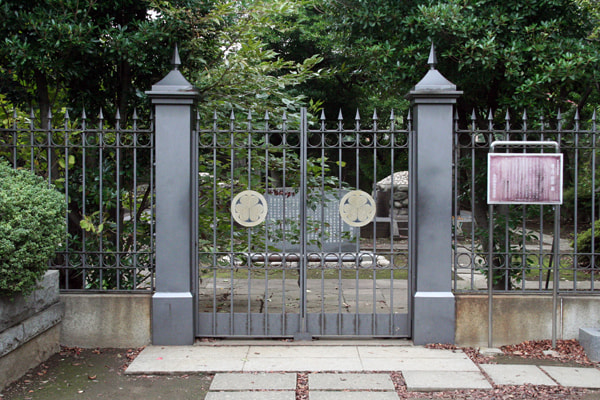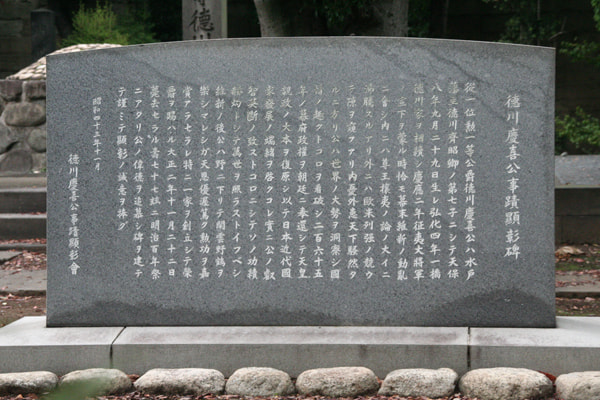
"Aoi-no Ma," in which Yoshinobu had to stay for two months before retiring to Mito. The scenes of the past days are brought back vividly.
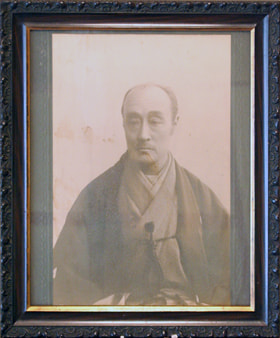
Yoshinobu Tokugawa, the 15th barbarian-quelling generalissimo
A portrait of Yoshinobu, who had a profound knowledge of photography, hangs quietly.

There is an inscription indicating that he stayed in the room for two months.
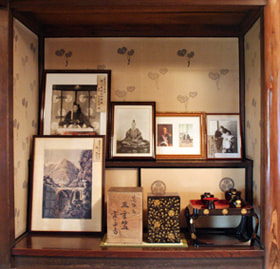
The Tokugawa Shogunate returned political power to the Emperor in 1867, and Yoshinobu surrendered the title of the 15th barbarian-quelling generalissimo. The next year, in 1868, he confined himself to "Aoi-no Ma," a reception room in Kan-eiji Temple.
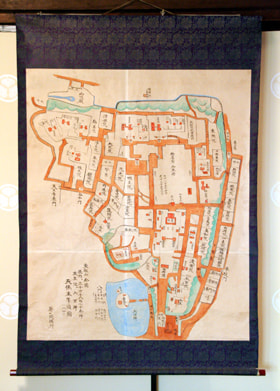
This map of Toeizan has an inscription indicating that it was provided to Aoi-no Ma. On the map, there are also descriptions indicating that the precincts was over 997,900 square meters, the Hojo Ike pond was approximately 198,350 square meters and the map was drawn in around 1840. The vastness of the precincts can be imagined.
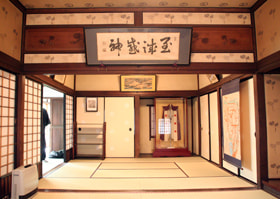
Aoi-no Ma is still same as when Yoshinobu stayed in it. The warm sunlight pours into the room through the veranda.
The remnant of the history exits in the deep green woods.
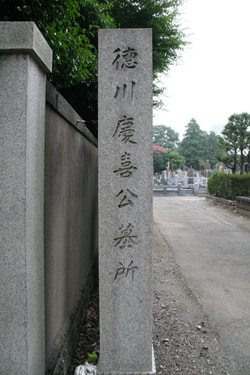
The official grave of Yoshinobu Tokugawa exits in the Kan-eiji Yanaka Reien cemetery.
Yoshinobu, who succeeded to the 15th shogun in 1866, returned political power to the Emperor next year. After staying in Kan-eiji Temple for a while, he moved to Mito, and finally secluded himself at Sunpu (present-day Shizuoka Prefecture). Later, he relocated his residence to Tokyo, and died in 1913.
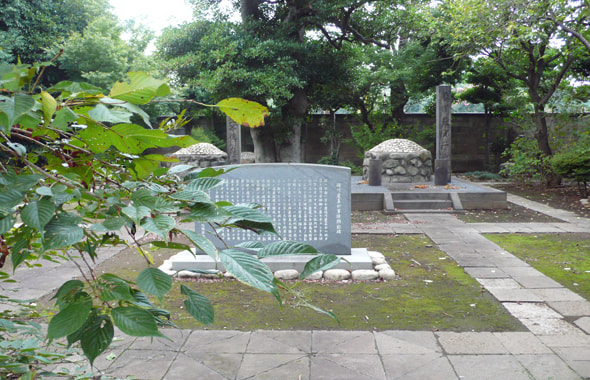
The tomb of Yoshinobu Tokugawa is a round barrow covered by a layer of stones, which lies a little to the southwest of the center of the graveyard covering an area of over 5,600 square meters. In the image, you can see the tomb on the right behind the monument honoring Yoshinobu.
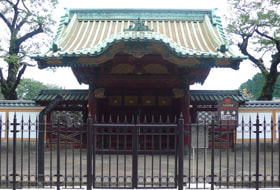
Mausoleum of Ietsuna Tokugawa (an important cultural property) Kan-eiji cemetery
Ietsuna succeeded the 3rd shogun Iemitsu, and became the 4th shogun at the age of 11. He died at the young age of 40.
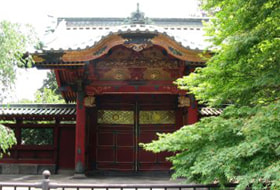
Mausoleum of Tsunayoshi Tokugawa (an important cultural property) Kan-eiji cemetery
The 5th shogun Tsunayoshi, who is well known for "Shorui Awaremi-no Rei," an edict forbidding cruelty to all living things, succeeded Ietsuna, and became the shogun. Tsunayoshi governed wisely in the early days of his administration. His governance was honored as "Tenna-no Chi," or a reform in the Tenna Period.
The 5th shogun Tsunayoshi, who is well known for "Shorui Awaremi-no Rei," an edict forbidding cruelty to all living things, succeeded Ietsuna, and became the shogun. Tsunayoshi governed wisely in the early days of his administration. His governance was honored as "Tenna-no Chi," or a reform in the Tenna Period.

Yoshinobu Tokugawa, the 15th barbarian-quelling generalissimo
A portrait of Yoshinobu, who had a profound knowledge of photography, hangs quietly.

The official grave of Yoshinobu Tokugawa exits in the Kan-eiji Yanaka Reien cemetery.













